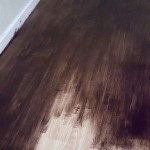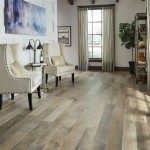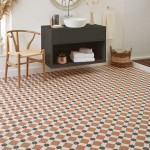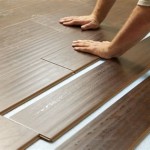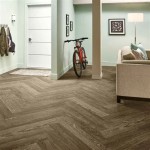Tiger Stripe Wood Flooring: A Distinctive and Dramatic Choice
Tiger stripe wood flooring, also known as zebrawood flooring or occasionally tigerwood flooring (though the latter often refers to Goncalo Alves), presents a visually striking and unique option for homeowners and designers seeking to add a bold statement to their interiors. This distinctive flooring derives its name from the prominent, contrasting stripes that resemble the patterns found on tigers or zebras. The dramatic effect arises from the wood’s natural grain variations, creating a dynamic and captivating aesthetic.
While the term "tiger stripe" can be applied to various wood species that exhibit this striped characteristic, the most commonly associated wood is Goncalo Alves, native to South America, particularly Brazil. However, other woods like zebrawood (from Africa) and occasionally specific cuts of maple or oak can also display similar stripe patterns. Understanding the specific species being offered is crucial to ensure the desired durability, color, and overall appearance are achieved.
The use of tiger stripe wood flooring immediately elevates the design of a space, transforming it into a focal point. Its inherent drama makes it well-suited for spaces where a strong visual impact is desired, such as entryways, living rooms, and dining rooms. However, its bold nature requires careful consideration regarding the overall design scheme to avoid overwhelming the space. Selecting complementary colors and furniture styles is key to creating a cohesive and aesthetically pleasing environment.
Visual Characteristics and Aesthetics
The defining characteristic of tiger stripe wood flooring is, of course, its pronounced striping. This striping is caused by variations in the wood’s density and color, creating distinct lines that run the length of the planks. The color contrast can range from relatively subtle variations in brown tones to stark contrasts between dark brown or black stripes and lighter tan or cream backgrounds. The specific species of wood and the cut of the timber significantly influence the intensity and frequency of the stripes.
The grain pattern itself can vary depending on the cut of the wood. Plain sawn planks often exhibit a more pronounced and wild pattern, while quarter sawn planks tend to have straighter, more uniform stripes. This variability allows designers to choose the specific type of pattern that best complements their design vision.
Beyond the striping itself, the wood species also contributes to the overall aesthetic. Goncalo Alves, for instance, tends to have a reddish-brown hue with darker brown or black stripes, offering a warm and rich feel. Zebrawood, on the other hand, typically features a lighter tan or cream background with dark brown or black stripes, creating a more striking and exotic look. The choice of species should be carefully considered based on the desired color palette and overall design style.
The finish applied to the flooring also plays a crucial role in its appearance. A high-gloss finish will enhance the contrast between the stripes and create a more dramatic effect, while a matte finish will soften the contrast and provide a more subtle, natural look. The finish also affects the wood's durability and resistance to scratches and wear, so it's essential to choose a finish that is appropriate for the expected level of traffic.
Furthermore, the width and length of the planks contribute to the overall visual impact. Wider planks tend to showcase the stripe patterns more prominently, while longer planks create a more continuous and flowing appearance. The choice of plank size should be based on the size and proportions of the room.
Durability and Maintenance Considerations
The durability of tiger stripe wood flooring is largely dependent on the specific wood species chosen. Goncalo Alves is known for its hardness and density, making it a durable option for high-traffic areas. Zebrawood, while visually striking, tends to be slightly softer and may be more susceptible to scratches and dents. Therefore, it is crucial to research the specific hardness and durability ratings of the chosen species before installation. The Janka hardness scale is a useful tool for comparing the relative hardness of different wood species.
Proper installation is crucial for ensuring the long-term durability of tiger stripe wood flooring. Subfloor preparation is essential to create a stable and level surface for the flooring to be installed upon. Improper subfloor preparation can lead to unevenness, squeaking, and premature wear. Professional installation is highly recommended, especially for engineered or solid hardwood flooring, as it requires specialized tools and techniques.
Regular maintenance is also essential for preserving the beauty and longevity of tiger stripe wood flooring. This includes regular sweeping or vacuuming to remove dirt and debris, which can scratch the surface of the wood. Damp mopping with a wood-specific cleaner is also recommended to remove stains and spills. Avoid using harsh chemicals or abrasive cleaners, as these can damage the finish and the wood itself.
Protective measures, such as using area rugs in high-traffic areas and placing felt pads under furniture legs, can help to prevent scratches and dents. It is also important to control humidity levels in the home to prevent the wood from expanding or contracting, which can lead to warping or cracking. Maintaining a consistent humidity level between 30% and 50% is generally recommended.
Depending on the finish applied to the flooring, periodic refinishing may be necessary to restore its original luster. The frequency of refinishing will depend on the level of traffic and wear. A professional wood floor refinisher can sand down the surface of the flooring, apply a new stain if desired, and apply a new protective finish.
Design Integration and Styling
Due to its bold and distinctive appearance, integrating tiger stripe wood flooring effectively into a design scheme requires careful planning and consideration. It is essential to balance the dramatic nature of the flooring with other elements of the room to create a cohesive and harmonious space.
Color selection plays a crucial role in complementing tiger stripe wood flooring. Neutral colors, such as whites, creams, grays, and soft browns, tend to work well as they provide a backdrop that allows the flooring to stand out without overwhelming the space. Accents of bold colors can be incorporated through furniture, artwork, and accessories, but it is important to use them sparingly to avoid creating a cluttered or chaotic look.
Furniture styles should also be chosen to complement the flooring. Modern and minimalist furniture styles often work well as they provide a clean and uncluttered aesthetic that allows the flooring to take center stage. Traditional furniture styles can also be used, but it is important to choose pieces that are not too ornate or fussy, as this can compete with the boldness of the flooring.
Lighting is another important factor to consider. Natural light can enhance the natural beauty of the wood and highlight the stripe patterns. Artificial lighting should be chosen to create a warm and inviting atmosphere. Dimmable lighting can be used to adjust the light levels depending on the time of day and the desired mood.
Accessories should be carefully chosen to complement the overall design scheme. Simple and elegant accessories, such as vases, sculptures, and artwork, can add personality to the space without detracting from the flooring. Avoid using too many accessories, as this can create a cluttered and overwhelming look.
Consider the overall style of the home when designing with tiger stripe wood flooring. This flooring can work well in a variety of styles, from modern and contemporary to transitional and even some eclectic designs. The key is to create a balance between the bold nature of the flooring and the other elements of the room to create a cohesive and aesthetically pleasing space.
In smaller rooms, consider using tiger stripe wood flooring as an accent, perhaps as a border or in a smaller area, rather than covering the entire floor. This can add a touch of drama without overwhelming the space. In larger rooms, the flooring can be used more extensively, but it is still important to consider the other elements of the room to create a balanced design.
Ultimately, successful integration of tiger stripe wood flooring requires a discerning eye and a willingness to experiment with different design ideas. By carefully considering the color palette, furniture styles, lighting, and accessories, a designer can create a space that is both visually stunning and aesthetically pleasing.

Tiger Stripe Strand Woven Bamboo Flooring 8003 China Floor Planks Made In Com

Strand Woven Tiger Stripe From Home Legend S Renew And Re Collection Bamboo Flooring Floor Design House

Tigerwood Prefinished Solid Hardwood Floors Unique Wood

14 Mm Lock Tiger Stripe Strand Woven Bamboo Flooring Waterproof Bambus Parquet For Indoor China And

Bamboo Flooring Kansas City Best Contractor S

Orange Tiger Stripe Glowry Collection

Anbo Style Tigerwood Strand Woven Solid Bamboo Flooring Lacquered 142x14 Mm Aestswb142 Hardwood Floors Wood

Bamboo Flooring Dubai Best Company In Uae 2024

Tiger Stripe Strand Woven Bamboo Flooring Indoor Wood China Floor Made In Com

Discount 4 X 3 Tigerwood Clear Grade Prefinished Solid Hardwood Floors By Hurst Hardwoods
Related Posts

